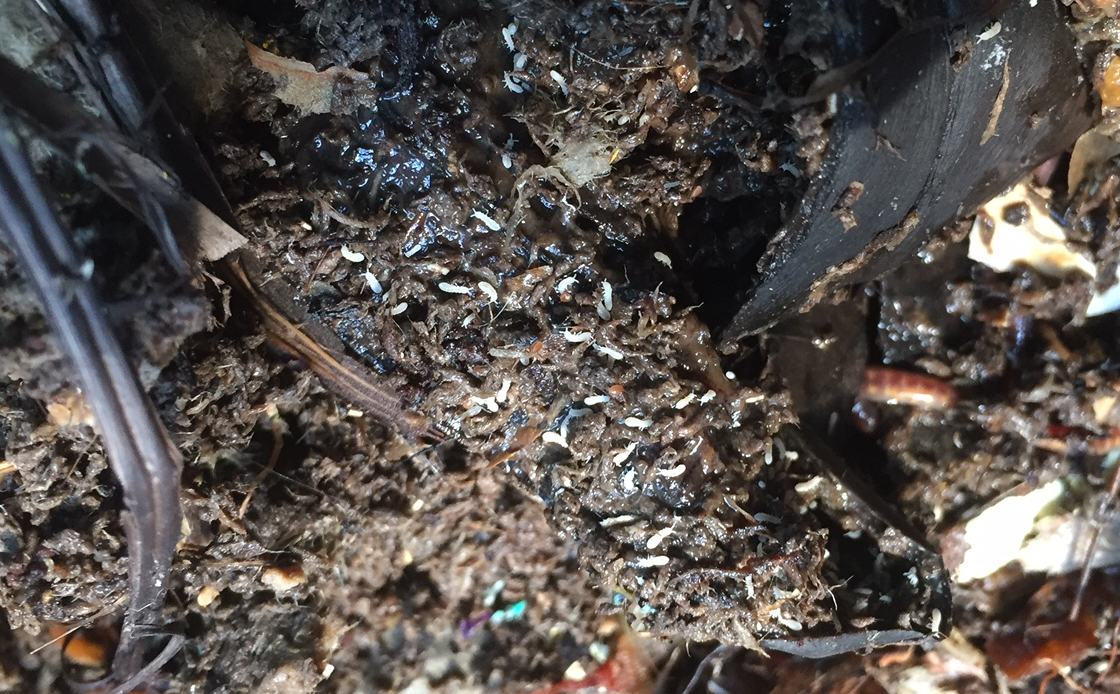Sometimes it’s a bad sign when you see tiny white bugs on or in the soil of your houseplants. It’s not the only sign that something is wrong; the plant may also have yellowing leaves and slow growth, which are both signs of an infestation.
However, not all tiny white bugs are harmful. It is important to look into the problem more deeply before you do anything to make sure it is a problem. This page tells you about the different kinds of tiny white bugs that you might find in houseplant soil and how to get rid of them.
It’s common for tiny bugs to start swarming under indoor plant pots While some are harmless or even beneficial to your plants, others can spell trouble. Identifying what’s crawling around in the soil and on damp surfaces will help you take the right action Here’s how to determine what those little insects are and keep them away from your indoor garden.
Common Culprits
There are a few usual suspects when it comes to small bugs infesting potted plants:
Fungus Gnats
These tiny black flying insects look like fruit flies. They thrive in damp, organic soils While mostly just a nuisance, fungus gnat larvae can damage plant roots. Get rid of them by letting soil dry out completely between waterings
Soil Mites
Too small to see with the naked eye, soil mites are whitish bugs less than 1 mm long. They eat decaying plant material and fungi so aren’t directly harmful to plants. But large populations can indicate overly moist conditions.
Springtails
Another tiny soil-dweller, springtails are under 3 mm long and jump around when disturbed. They feed on mold and fungi, helping break down organic matter in potting mix. So they aid nutrient cycling but can multiply quickly in damp soil.
Mealybugs
Fluffy white pests about 2-3 mm long, mealybugs cling to plant stems and leaves. They cause damage by sucking sap. These bugs leave sticky honeydew and may spread diseases. Isolate infested plants and use cotton swabs dipped in alcohol to remove them.
Thrips
Slender yellow or dark bugs about 1-2 mm long, thrips rasp leaves and feed on sap. They leave streaks of silvery damage on foliage. These pests favor tight plant spacing and dry conditions. Keep them away with good airflow.
Diagnosing the Problem
To identify bugs lurking in plant pots, carefully dig through the top layer of soil with chopsticks or a skewer. Gently pull apart roots to check for tiny white larvae or other crawling insects.
Scan leaves and stems for signs like stickiness, white residue, brown spots, or silvery streaks. These symptoms often indicate pest activity. Slowed growth and dry, shriveled leaves can also signal bugs are feeding on roots or sap.
Place a piece of white paper under the plant pot and let it sit overnight. Come morning, shake the potted plant gently. Tiny bugs will fall onto the paper for easier viewing. You can also do this over a small bowl of water. Just be sure not to confuse harmless springtails with dangerous spider mites.
Alternatively, take a sample of the infected soil and bugs to your local extension office for microscopic identification. Their experts can diagnose the exact pest.
Effective Treatments
Once you know what kind of tiny insects are living under your plant pots, you can take steps to get rid of them. Here are some effective treatments:
- Let soil dry out completely between waterings to deter fungus gnats, soil mites, and springtails.
- Remove and destroy badly infested plants to eliminate mealybugs, thrips, and other sap-sucking bugs.
- Repot plants in fresh, sterile potting mix to interrupt bug life cycles.
- Use sticky traps for adult fungus gnats and thrips flying around plants.
- Apply insecticidal soaps or neem oil to kill soft-bodied pests like mealybugs.
- Sprinkle diatomaceous earth on the soil to shred soft-bodied insects.
- Use systemic insecticides applied to soil to poison and kill larvae and adults.
- Release predatory mites or nematodes to pursue and eat target pests.
- Sterilize pots before reuse to destroy any eggs left behind.
Avoid overwatering and improve airflow circulation to deter future infestations. Keep humidity around plants under 50% to prevent moist conditions where bugs thrive.
Act quickly at the first sign of issues to prevent tiny pests from destroying your indoor garden. With the right diagnosis and treatment, you can safely eliminate these pesky bugs from under your plant pots.
Tiny bugs in houseplant soil
- The Ultimate Guide to Growing Strawberries in Raised Beds - August 8, 2025
- No-Dig Garden Beds: The Easiest Way to Grow a Beautiful Garden - August 6, 2025
- How to Protect and Preserve Wood for Raised Garden Beds - August 6, 2025

